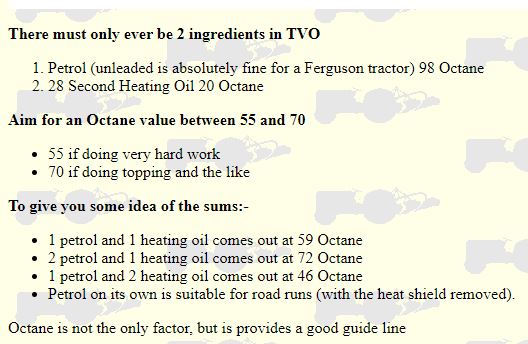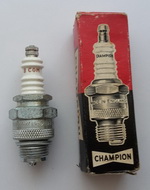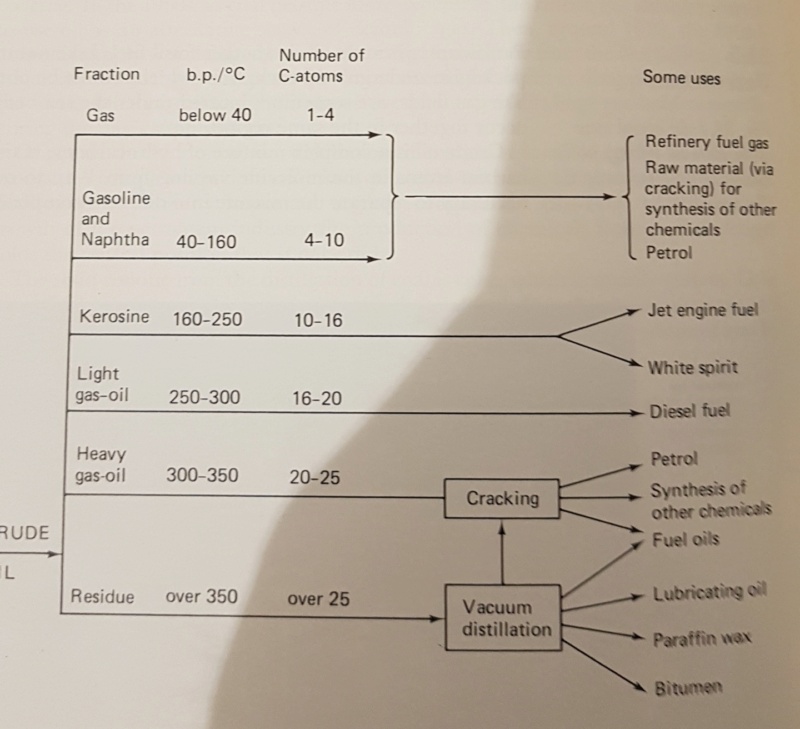Norman T300
+5
oldgit
donp
maryalice
mattblack
StuartTurnerSteve
9 posters
Page 4 of 4
Page 4 of 4 •  1, 2, 3, 4
1, 2, 3, 4
 Re: Norman T300
Re: Norman T300
Please don't stretch the spring; you'll never unstretch it.
Regarding the fuel warmer thingy: if they made a paraffin version of this engine; it could be a vaporizer. If so, it would have a heavier float and bigger jets.
Regarding the fuel warmer thingy: if they made a paraffin version of this engine; it could be a vaporizer. If so, it would have a heavier float and bigger jets.
oldgit- A true Stationary engine owner

- Posts : 163
Join date : 2019-07-07
 Re: Norman T300
Re: Norman T300
Well, in theory, we wouldn't want to... but I'm not yet convinced by the theory, and even if I was, I'm not confident of getting it right.oldgit wrote: Please don't stretch the spring; you'll never unstretch it.
It was mooted as a possible path of last resort and we're a good way from there yet.
Regarding the fuel warmer thingy: if they made a paraffin version of this engine; it could be a vaporizer. If so, it would have a heavier float and bigger jets.
It's a thought, but I think paraffin engines need to start on petrol and there's no sign of any way to do that. That could have all gone missing somewhere in its lifetime, so I don't dismiss it entirely.
The question now is on whether I am going to re-instate it. I cleared out the epoxy with intent to, but I'm a bit put off by that baffle.
Hairyloon- A true Stationary engine owner

- Posts : 117
Join date : 2014-03-27
 Re: Norman T300
Re: Norman T300
Hairyloon wrote:oldgit wrote:
Just a thought: blue cat's carb body has a 26-75 venturi fitted; from your earlier pictures it looks to me as though your original carb. had a smaller venturi.
This may be an optical illusion or just the imagining of an old silly me; but is another straw to clutch at. Maybe worth a look.
Supposing the venturi is wrong, is it hard to find replacements?
Or are they as simple as they look: might it be possible to cast a replacement and finish off on a lathe?
Just to clear this point up.
The correct venturi for the T300 should be marked 26-15. The 26 indicating that it is for the 26mm carburettor, and 15 indicating that the venturi internal diameter is 15mm.
If the carburettor is the original one the 26-15 venturi will be the correct one.
It should not be a tight fit, or epoxied in. It is a slip fit and secured by a pinch screw on the top of the carburettor.
I think I can find a spare 26-15 venturi if yous is not the correct size.
_________________
blue cat
blue cat- Life Member

- Posts : 1065
Join date : 2013-10-10
 Re: Norman T300
Re: Norman T300
blue cat wrote:The correct venturi for the T300 should be marked 26-15.
I think the face where it is marked is damaged, I suspect that may be one of the reasons for the epoxy (I didn't put it there). I'll check again, see if anything is legible.
Well it was a tight fit, and a devil of a job to get it in in line.It should not be a tight fit, or epoxied in. It is a slip fit and secured by a pinch screw on the top of the carburettor.
I'm not so worried about the carburettor at the moment: it does run, so it can't be that far off. My current concern is the governor, which doesn't appear to close the throttle until its revving at about double what I think it should be. There is no discernable difference in its position between stationary and normal running speed: that would put the throttle wide open.I think I can find a spare 26-15 venturi if yous is not the correct size.
I can't see anything wrong with the governor: what is there to go wrong? It runs on physics. Unless it is seized, which it doesn't seem to be, all I can imagine going wrong is that the springs get tired over time, but mine has the opposite problem.
Any suggestions on that front?
Changing the springs ought to be fairly straightforward apart from getting the right springs. They are just springs, but they need to be the right length and strength.
Hairyloon- A true Stationary engine owner

- Posts : 117
Join date : 2014-03-27
 Re: Norman T300
Re: Norman T300
Hairyloon wrote:
I've been giving some thought to changing the carb for something that I can run propane through. I suspect that some here might consider that as heresy, but in my book originality must take a back seat to practicality and I'm told they can make bio-propane now, so it may yet be the fuel of the future...
ETA: most of the LPG carbs I've looked at can also run on natural gas and I can make that myself... not that I'm a doomsday prepper or anything. :?
This would only be partial heresey
_________________
blue cat
blue cat- Life Member

- Posts : 1065
Join date : 2013-10-10
 Re: Norman T300
Re: Norman T300
Hairyloon wrote: My current concern is the governor, which doesn't appear to close the throttle until its revving at about double what I think it should be. There is no discernable difference in its position between stationary and normal running speed: that would put the throttle wide open.
I can't see anything wrong with the governor: what is there to go wrong? It runs on physics. Unless it is seized, which it doesn't seem to be, all I can imagine going wrong is that the springs get tired over time, but mine has the opposite problem.
Any suggestions on that front?
Changing the springs ought to be fairly straightforward apart from getting the right springs. They are just springs, but they need to be the right length and strength.
I have never heard of the governor springs being an issue with a Norman engine. There were normally two sets available, a set for 1500rpm, and a set for 1800rpm. The springs are very stiff, and not an easy remove from the governor mechanism. As long as the governor rod retracts when the governor weights fly open then they should be OK. As you will have seen earlier, to test this you would need to force the weights apart with 2 screwdrivers.
For slow running the goveror lever should not touch the governor rod, as the knurled speed control knob partially closes the throttle.
Have another look at the governor rod positions on page 2.
_________________
blue cat
blue cat- Life Member

- Posts : 1065
Join date : 2013-10-10
 Re: Norman T300
Re: Norman T300
blue cat wrote:Hairyloon wrote:I've been giving some thought to changing the carb for something that I can run propane through...
This would only be partial heresey
I am open to being talked out of it. Or encouraged into doing it.
I doubt that I'll be getting a period conversion for it, especially not as I already have a propane carb that ought to do it. Well, actually it is a duel fuel carb.
My original thought was to scrap off the petrol side of the new carb and introduce the propane pipe somewhere, and my second thoughts were to retain the throttle part of the original setup and put a propane venturi in place of the petrol system, but my current thoughts are that it is much easier to simply replace the whole carburettor.
I think that just needs an adaptor plate to match up the two faces...
Hairyloon- A true Stationary engine owner

- Posts : 117
Join date : 2014-03-27
 Re: Norman T300
Re: Norman T300
I'll go and have another play, but I am fairly certain that the rod does not retract soon enough on the rev-scale. As I said the other day: it was giving over 60V.blue cat wrote:For slow running the goveror lever should not touch the governor rod, as the knurled speed control knob partially closes the throttle.
Have another look at the governor rod positions on page 2.
Hairyloon- A true Stationary engine owner

- Posts : 117
Join date : 2014-03-27
 Re: Norman T300
Re: Norman T300
Hairyloon wrote:oldgit wrote:Regarding the fuel warmer thingy: if they made a paraffin version of this engine; it could be a vaporizer. If so, it would have a heavier float and bigger jets.
It's a thought, but I think paraffin engines need to start on petrol and there's no sign of any way to do that...
Wait a moment: what's that pipe about?

It is blocked off now, but maybe it used to go to a paraffin tank?
I can't imagine what other purpose it might have had, apart from another fuel source.
Did they make these in a paraffin version? If so, and the jets are intended for paraffin, then would that make it run rich on petrol? If so, then that would explain why my exhaust is so sooty...
Hairyloon- A true Stationary engine owner

- Posts : 117
Join date : 2014-03-27
 Re: Norman T300
Re: Norman T300
Yes, paraffin (actually TVO/Kerosene rather than paraffin) versions were made, hence the fuel warmer seen earlier. However they were not a great success and quietly dropped. The fuel warmer part is a very rare Norman part.
The fuel inlet to the carburettor would have had a changeover tap above the inlet for selecting the fuel from the appropriate tank. I am not aware that the jetting was changed for running on paraffin.
The fuel inlet to the carburettor would have had a changeover tap above the inlet for selecting the fuel from the appropriate tank. I am not aware that the jetting was changed for running on paraffin.
_________________
blue cat
blue cat- Life Member

- Posts : 1065
Join date : 2013-10-10
 Re: Norman T300
Re: Norman T300
I would be surprised if the TVO version did not have a lower compression ratio than the petrol/gasoline. This should ought to be noted in the operators manual, or the parts list.
oldgit- A true Stationary engine owner

- Posts : 163
Join date : 2019-07-07
 Re: Norman T300
Re: Norman T300
Is that semantics, or is there a real difference?blue cat wrote:Actually TVO/Kerosene rather than paraffin...
Hairyloon- A true Stationary engine owner

- Posts : 117
Join date : 2014-03-27
 Re: Norman T300
Re: Norman T300
Hairyloon wrote:Is that semantics, or is there a real difference?blue cat wrote:Actually TVO/Kerosene rather than paraffin...
My understanding (from a bloke on a grey Fergie at Ackworth) is as follows. Happy to be corrected if I (or he) got it wrong.
Kerosene is a lower fraction of petroleum spirit than paraffin to be used in heating etc.
Paraffin is more refined (less smell) used in lamps etc. (It also doesn't drop its aitches and cuts the crust off sandwiches)
TVO is a paraffin / petrol mix used in tractors after the end of WWII.
_________________
Regards Paul
Tha can alus tell a Yorkshireman - but tha can't tell him much.

Woodsman- Admin
- Posts : 2815
Join date : 2014-08-24
Age : 73
Location : God's own county
 Re: Norman T300
Re: Norman T300
Woodsman wrote:Hairyloon wrote:Is that semantics, or is there a real difference?blue cat wrote:Actually TVO/Kerosene rather than paraffin...
My understanding (from a bloke on a grey Fergie at Ackworth) is as follows. Happy to be corrected if I (or he) got it wrong.
Kerosene is a lower fraction of petroleum spirit than paraffin to be used in heating etc.
Paraffin is more refined (less smell) used in lamps etc. (It also doesn't drop its aitches and cuts the crust off sandwiches)
TVO is a paraffin / petrol mix used in tractors after the end of WWII.
Your post moved me to visit Wikipedia and apparently TVO is a publicly funded English-language educational television network...
But further on, they say much the same as you, but also provide a link to a recipe.
Hairyloon- A true Stationary engine owner

- Posts : 117
Join date : 2014-03-27
 Re: Norman T300
Re: Norman T300
Woodsman wrote:
My understanding (from a bloke on a grey Fergie at Ackworth) is as follows. Happy to be corrected if I (or he) got it wrong.
Kerosene is a lower fraction of petroleum spirit than paraffin to be used in heating etc.
Paraffin is more refined (less smell) used in lamps etc. (It also doesn't drop its aitches and cuts the crust off sandwiches)
TVO is a paraffin / petrol mix used in tractors after the end of WWII.
The official line from the Ferguson club is this

But ask anyone in the tractor club and they all have a different answer, the popular one seems to be 4 parts oil to 1 part petrol with a dash of 2 stroke oil in it.
_________________
Stuart

Robotstar5- Life Member

- Posts : 1109
Join date : 2018-09-25
 Re: Norman T300
Re: Norman T300
_________________
Regards Paul
Tha can alus tell a Yorkshireman - but tha can't tell him much.

Woodsman- Admin
- Posts : 2815
Join date : 2014-08-24
Age : 73
Location : God's own county
 Re: Norman T300
Re: Norman T300
Given that kerosine is a lot cheaper than petrol, I would think that we'd want to use the minimum petrol in the mix for successful running...
But now I am feeling bad for making no progress since last we were here. I'm a bit stumped about the governor... but I suppose that is no excuse for not sorting out the exhaust.
But now I am feeling bad for making no progress since last we were here. I'm a bit stumped about the governor... but I suppose that is no excuse for not sorting out the exhaust.
Hairyloon- A true Stationary engine owner

- Posts : 117
Join date : 2014-03-27
 Re: Norman T300
Re: Norman T300
My brother used to run his 1947 Fordson Major on central heating oil, petrol and redex
maryalice- Life Member

- Posts : 1310
Join date : 2010-01-23
Age : 70
Location : Bedfordshire
 Re: Norman T300
Re: Norman T300
Hairyloon wrote:Given that kerosine is a lot cheaper than petrol, I would think that we'd want to use the minimum petrol in the mix for successful running...
.
I wouldn't bother, just run your Norman on petrol.
_________________
blue cat
blue cat- Life Member

- Posts : 1065
Join date : 2013-10-10
 Re: Norman T300
Re: Norman T300
Hairyloon wrote:
I'm a bit stumped about the governor... but I suppose that is no excuse for not sorting out the exhaust.
Well I've created some kind of an exhaust system...

It's not pretty, and at the moment it's only held together with persuasion, but it's a lot quieter now... Last time I had it out for a tinker the neighbours complained. :?
The problem with that setup is that now I can't get to the fuel tap, and the exhaust is uncomfortably close to the plastic fuel line...
Why did I not put the exhaust out the other side? Just 'cos that's the side it's supposed to go, I think.
Hairyloon- A true Stationary engine owner

- Posts : 117
Join date : 2014-03-27
 Re: Norman T300
Re: Norman T300
Fuel tap is normally screwed into the bottom of the fuel tank, which makes it easy to reach.
Original fuel pipes would have been copper.
Original fuel pipes would have been copper.
_________________
blue cat
blue cat- Life Member

- Posts : 1065
Join date : 2013-10-10
 Re: Norman T300
Re: Norman T300
That is where I would normally expect to find one.blue cat wrote:Fuel tap is normally screwed into the bottom of the fuel tank...
It's copper to the tap, then plastic to the heat exchanger.Original fuel pipes would have been copper.
Hairyloon- A true Stationary engine owner

- Posts : 117
Join date : 2014-03-27
Page 4 of 4 •  1, 2, 3, 4
1, 2, 3, 4
Page 4 of 4
Permissions in this forum:
You cannot reply to topics in this forum
